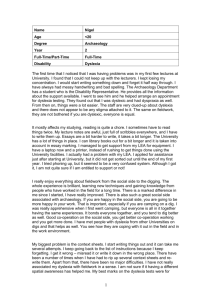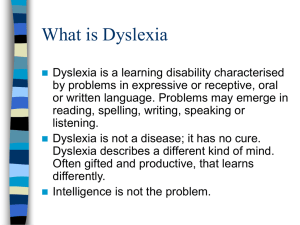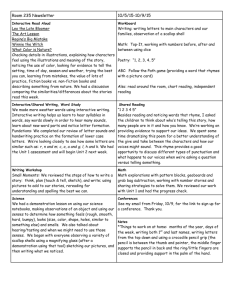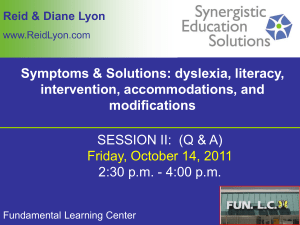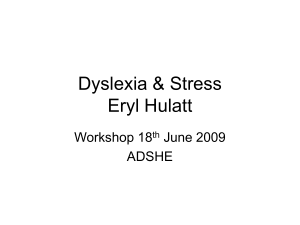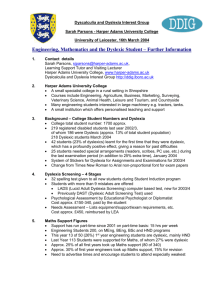Word document version
advertisement
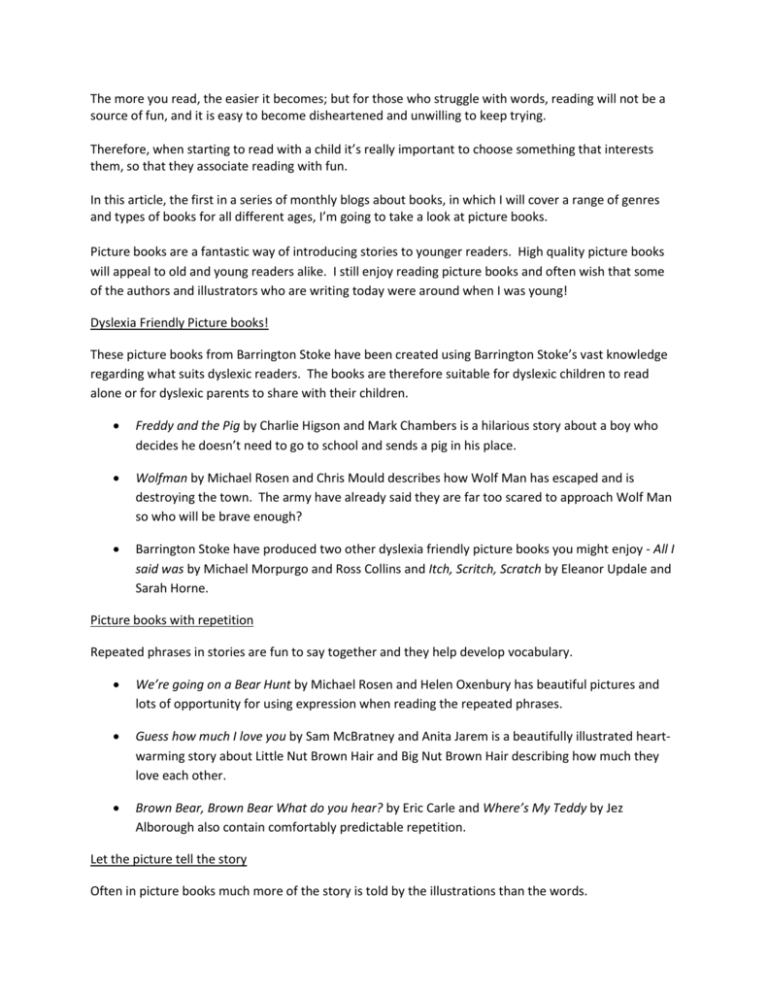
The more you read, the easier it becomes; but for those who struggle with words, reading will not be a source of fun, and it is easy to become disheartened and unwilling to keep trying. Therefore, when starting to read with a child it’s really important to choose something that interests them, so that they associate reading with fun. In this article, the first in a series of monthly blogs about books, in which I will cover a range of genres and types of books for all different ages, I’m going to take a look at picture books. Picture books are a fantastic way of introducing stories to younger readers. High quality picture books will appeal to old and young readers alike. I still enjoy reading picture books and often wish that some of the authors and illustrators who are writing today were around when I was young! Dyslexia Friendly Picture books! These picture books from Barrington Stoke have been created using Barrington Stoke’s vast knowledge regarding what suits dyslexic readers. The books are therefore suitable for dyslexic children to read alone or for dyslexic parents to share with their children. Freddy and the Pig by Charlie Higson and Mark Chambers is a hilarious story about a boy who decides he doesn’t need to go to school and sends a pig in his place. Wolfman by Michael Rosen and Chris Mould describes how Wolf Man has escaped and is destroying the town. The army have already said they are far too scared to approach Wolf Man so who will be brave enough? Barrington Stoke have produced two other dyslexia friendly picture books you might enjoy - All I said was by Michael Morpurgo and Ross Collins and Itch, Scritch, Scratch by Eleanor Updale and Sarah Horne. Picture books with repetition Repeated phrases in stories are fun to say together and they help develop vocabulary. We’re going on a Bear Hunt by Michael Rosen and Helen Oxenbury has beautiful pictures and lots of opportunity for using expression when reading the repeated phrases. Guess how much I love you by Sam McBratney and Anita Jarem is a beautifully illustrated heartwarming story about Little Nut Brown Hair and Big Nut Brown Hair describing how much they love each other. Brown Bear, Brown Bear What do you hear? by Eric Carle and Where’s My Teddy by Jez Alborough also contain comfortably predictable repetition. Let the picture tell the story Often in picture books much more of the story is told by the illustrations than the words. The Man on the Moon by Simon Bartram introduces us to Bob, whose job it is to keep the moon clean and look after the moon tourists. He is convinced that there aliens don’t exist. Read this book and see if you agree with him! Handa’s Surprise by Eileen Brown is the story of Handa who carries a basket of fruit on her head. What she doesn’t realise is that there are other characters in the story who are very interested in her fruit! Rosie’s Walk by Pat Hutchins and Suddenly By Colin McNaughton also offer illustrations which add to the story’s simple text. The old ones are the best! There is a wealth of children’s literature which has stood the test of time. Here some books you might remember from back in the day! The Very Hungry Caterpillar by Eric Carle has beautiful illustrations and pages with holes where the caterpillar has eaten through them – what more could you want! Where the Wild Things Are by Maurice Sendak is a book about a boy, a magic wolf suit and monsters! Is it all in Sam’s imagination or are the Wild Things real? Other classics include The Tiger who Came to Tea by Judith Kerr and Elmer by David McKee. Make time for rhyme! Books with a regular rhyming pattern are fun to read and offer the reader the opportunity to predict the word at the end of the sentence or the line. The Gruffalo by Julia Donaldson is one example of the author’s amazing skill at crafting stories with rhyme flowing through them. Each Peach Pear Plumb by Janet and Alan Ahlberg offers rhyme and repetition with fairy tale characters thrown in for good measure! Shark in the Park by Nick Sharratt and One Fish, Two Fish, Red Fish, Blue Fish by Dr Suess also give readers plenty of fun with rhyme. If you have any other suggestion for brilliant Picture Books I would love to hear from you! My suggestions are in no way definitive but hopefully they will provide food for thought and introduce you to some books or authors you are not already familiar with. You could purchase the books for your centre libraries, encourage local schools or libraries to stock them and inform parents about the books. Read, share, enjoy! The Book Blog is written by Alison Keeley who looks after Dyslexia Action’s Learning Centres in the South of England. Prior to joining Dyslexia Action Alison worked as a Deputy Head of Booktrust. She has always read a wide range of children’s literature even though she technically stopped being a child some time ago. If you have any questions or suggestions about subjects for future blogs please do leave a comment below.
